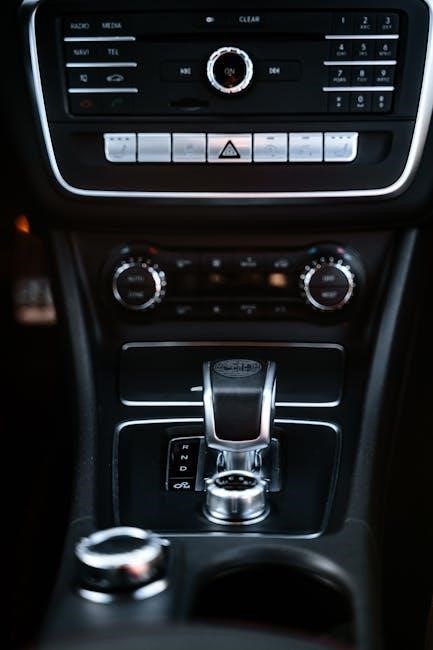Choosing between manual and automatic driving lessons is a crucial decision that impacts your learning experience and future driving opportunities. Factors like personal preference‚ driving conditions‚ and lifestyle play a significant role in selecting the right transmission type.
Understanding the Basics of Manual and Automatic Cars
Manual cars require drivers to use a clutch pedal and gearshift to change gears‚ offering control over speed and acceleration. Automatic cars‚ however‚ shift gears automatically‚ simplifying the driving process. Manual transmissions are often preferred for their fuel efficiency and lower costs‚ while automatics are praised for their ease of use‚ especially in traffic-heavy areas. The choice between the two depends on personal comfort‚ driving conditions‚ and long-term goals‚ as each transmission type demands different skills and offers unique benefits. Understanding these fundamentals helps learners make an informed decision tailored to their lifestyle and future driving needs.
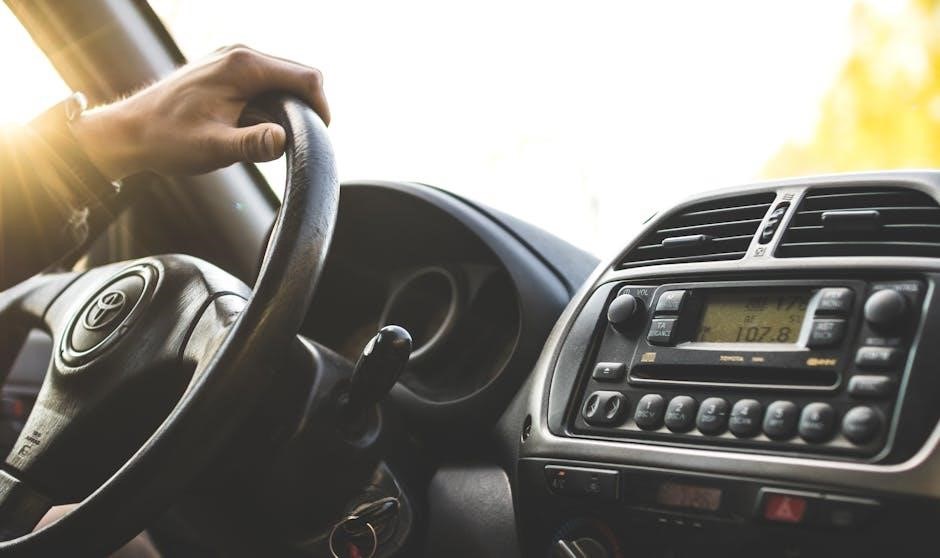
Pros and Cons of Manual Driving Lessons
Manual lessons offer better control and cost-effectiveness but require mastering clutch and gears‚ which can be challenging. They provide versatility but may be stressful in heavy traffic conditions.
Advantages of Learning Manual Transmission
Learning manual transmission offers enhanced control over the vehicle‚ allowing drivers to manage speed and power more precisely. This is particularly beneficial in varied driving conditions‚ such as hilly terrains or overtaking. Manual cars are generally more cost-effective to purchase and maintain compared to automatics. Additionally‚ mastering manual transmission provides versatility‚ enabling drivers to operate both manual and automatic vehicles. This skill can also broaden employment opportunities in roles requiring driving. Furthermore‚ manual driving fosters a deeper understanding of vehicle mechanics‚ making drivers more attuned to their car’s behavior. Overall‚ manual lessons equip drivers with valuable skills that enhance confidence and adaptability on the road.
Challenges of Mastering Manual Gearbox
Mastering a manual gearbox can be challenging‚ especially for new drivers. It requires coordination between the clutch pedal‚ gearshift‚ and accelerator‚ which can lead to jerky movements and stalling during the learning process. The steep learning curve involves understanding when to shift gears smoothly‚ which can be frustrating initially. Additionally‚ manual driving demands more physical effort and focus‚ particularly in heavy traffic‚ where frequent gear changes are necessary. This can be tiring and stressful for learners. While manual cars are often more affordable to purchase‚ they may incur higher maintenance costs over time due to the complexity of their transmission systems.
Pros and Cons of Automatic Driving Lessons
Automatic driving lessons offer simplicity and reduced stress‚ ideal for urban driving‚ but may limit flexibility and increase long-term costs compared to manual lessons.
Benefits of Simplified Automatic Transmission
Automatic driving lessons simplify the learning process by eliminating manual gear shifts‚ reducing stress and allowing learners to focus on road awareness and safety. This ease of use is particularly beneficial for new drivers‚ as it minimizes the complexity of coordinating clutch and gears. As a result‚ learners often progress faster and gain confidence sooner. The simplicity of automatic transmission is ideal for urban environments with frequent stop-and-go traffic‚ reducing driver fatigue. Additionally‚ automatic vehicles provide smoother acceleration and deceleration‚ enhancing overall control and comfort. Furthermore‚ they are increasingly prevalent‚ aligning with future trends in automotive technology. This makes them a practical choice for those prioritizing ease and convenience in their driving experience.
Drawbacks of Choosing Automatic Lessons
While automatic driving lessons offer simplicity‚ they come with notable drawbacks; One major downside is the higher cost of automatic vehicles‚ both in purchase and maintenance‚ compared to manual cars. Additionally‚ passing a driving test in an automatic car restricts your license to automatic vehicles only‚ limiting flexibility. This can be inconvenient if you need to drive manual cars in the future‚ requiring an additional test. Furthermore‚ automatic transmissions reduce driver engagement‚ which some find less rewarding. The lack of manual control can also be a disadvantage in specific driving scenarios‚ such as engine braking or navigating challenging terrain. These factors make automatic lessons less versatile for drivers seeking broader vehicle compatibility and driving skills.
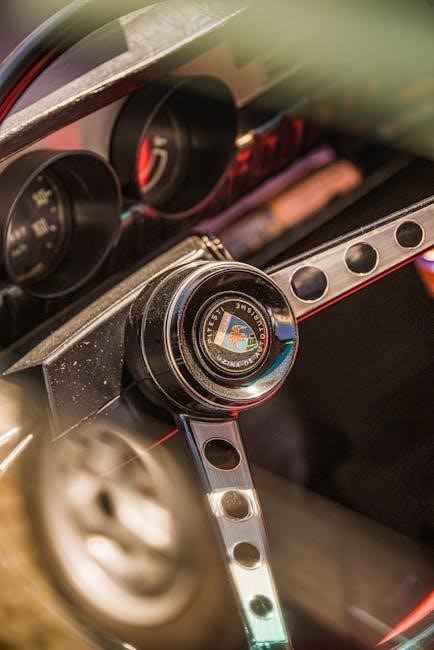
Cost Comparison: Manual vs. Automatic Driving Lessons
Manual lessons often cost less per session‚ but may require more lessons. Automatic lessons might be pricier per session but could need fewer overall.
Why Manual Lessons Might Be More Cost-Effective
Manual driving lessons can be more budget-friendly in the long run. While the initial learning curve is steeper‚ manual cars are generally cheaper to purchase and maintain. Additionally‚ once you master a manual transmission‚ you’re licensed to drive both manual and automatic vehicles‚ offering greater flexibility. This versatility can save money over time‚ especially if you plan to drive older or more affordable cars. Furthermore‚ the skills learned in manual lessons often lead to better fuel efficiency and lower maintenance costs‚ making them a cost-effective choice for many drivers.
Long-Term Financial Implications of Automatic Vehicles
Automatic vehicles often come with higher long-term financial implications compared to manual cars. The initial purchase price of automatics is typically more expensive‚ and maintenance costs can be greater due to the complexity of their transmission systems. Additionally‚ automatic cars may incur higher insurance premiums‚ as they are often associated with newer or luxury models. While automatic driving lessons might require fewer sessions‚ the overall cost of owning and maintaining an automatic vehicle can outweigh these short-term savings. Furthermore‚ the resale value of automatic cars may be lower in regions where manual transmissions are more common‚ affecting long-term financial returns.

Differences in Driving Tests for Manual vs. Automatic
Driving tests for manual and automatic vehicles differ in required skills. Manual tests assess gear shifting and clutch control‚ while automatic tests focus solely on steering and braking. Passing a manual test grants a license to drive both types‚ whereas an automatic test limits you to automatic vehicles only‚ potentially requiring a separate manual test later for full license privileges.
What to Expect in a Manual Driving Test
Taking a manual driving test requires demonstrating proficiency in gear shifting‚ clutch control‚ and smooth acceleration. You’ll be assessed on your ability to handle various driving scenarios‚ such as starting on an incline‚ reversing around a corner‚ and performing a three-point turn. Examiners will check if you use the correct gears for speed and road conditions‚ ensuring minimal jerking or stalling. The test also evaluates your observation skills and ability to interact safely with other road users. Proper use of mirrors and signals is crucial‚ as is maintaining control during maneuvers. Passing the manual test grants a license to drive both manual and automatic vehicles‚ offering greater flexibility.
How Automatic Driving Tests Differ
Automatic driving tests differ significantly from manual tests as they eliminate the need to demonstrate gear shifting and clutch control. The focus shifts entirely to your ability to safely navigate roads‚ obey traffic laws‚ and perform standard maneuvers like reversing and turning. Since automatic cars handle gear changes automatically‚ the test emphasizes observation‚ signaling‚ and smooth acceleration. You won’t be assessed on starting from a hill or shifting gears‚ allowing you to concentrate on steering and braking. However‚ passing an automatic test only qualifies you to drive automatic vehicles‚ which may limit your options if you need to drive manual cars in the future.

Geographical and Traffic Considerations
Geographical and traffic conditions heavily influence the choice between manual and automatic driving lessons. Urban areas with heavy traffic favor automatics for ease‚ while rural settings may prefer manuals for control.
Urban vs. Rural Driving Environments
In urban areas‚ heavy traffic and frequent stops make automatic cars more convenient‚ reducing the need for constant gear shifting and clutch control. This simplifies the learning process for new drivers‚ allowing them to focus on road awareness and safety. Rural environments‚ with open roads and less congestion‚ often favor manual transmissions‚ offering better control and engagement for drivers. The choice between manual and automatic lessons may therefore depend on where you plan to drive most frequently. Urban learners might prefer the ease of automatics‚ while those in rural areas may benefit from the precision of manuals.
How Traffic Conditions Influence Transmission Choice
Traffic conditions significantly influence whether manual or automatic driving lessons are more suitable. In urban areas with heavy traffic‚ automatic cars are often preferred due to their ease of use and reduced need for constant gear changes. This minimizes stress and fatigue in stop-and-go situations. Conversely‚ in rural areas with smoother traffic flow‚ manual transmissions can offer better control and fuel efficiency. Learners should consider the traffic they will most frequently encounter‚ as this directly impacts the practicality of their chosen transmission type. Understanding these dynamics helps in making an informed decision that aligns with their driving environment and lifestyle.
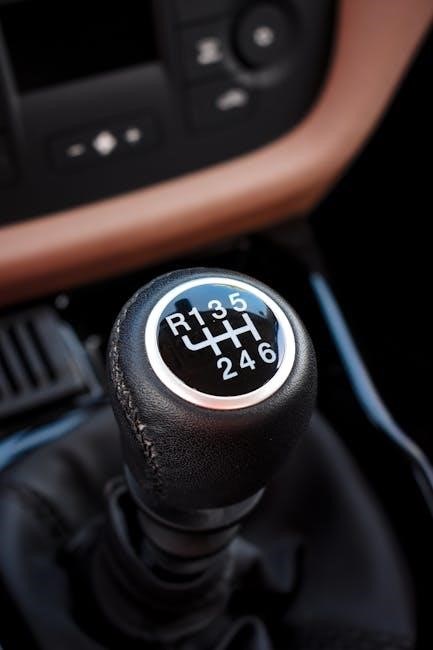
Future Trends in Driving Lessons
The rise of automatic-only lessons and electric vehicles is reshaping driving education‚ with manual transmission skills potentially becoming less relevant in the near future.
The Rise of Automatic-Only Lessons
The shift toward automatic-only driving lessons is gaining momentum‚ driven by the increasing popularity of automatic vehicles. Experts predict that manual transmission skills may become obsolete by 2040‚ with Gen Z potentially being the last generation to widely use manual gearboxes. This trend is supported by the growing preference for convenience and ease‚ especially in urban areas where stop-and-go traffic makes manual driving more stressful. The rise of electric vehicles‚ which are predominantly automatic‚ further accelerates this shift. Driving schools are adapting to this demand‚ offering more automatic lessons to meet learner preferences and simplify the learning process.
Impact of Electric Vehicles on Transmission Preferences
The rise of electric vehicles (EVs) is reshaping transmission preferences in driving lessons. Most EVs feature automatic transmissions‚ eliminating the need for manual gear shifts. This shift is influencing learners to opt for automatic lessons‚ as EVs are becoming increasingly popular due to environmental and technological advancements; Consequently‚ driving schools are adapting their curricula to focus more on automatic training. The simplicity and smooth acceleration of EVs align well with automatic transmissions‚ making them a preferred choice for new drivers. As EV adoption grows‚ the demand for manual driving skills may decline‚ further solidifying automatic lessons as the future of driver education.
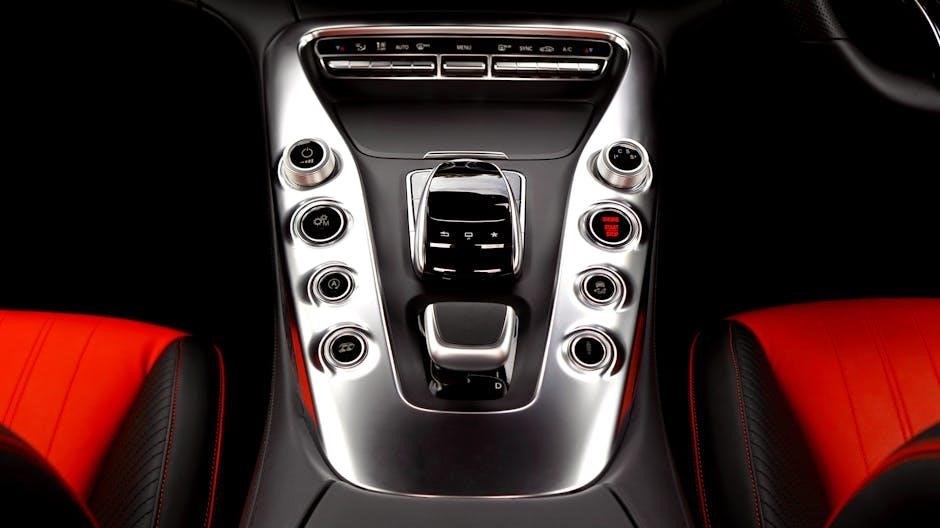
Personal Preference and Driving Style
Personal preference and driving style significantly influence the choice between manual and automatic lessons‚ as factors like control‚ comfort‚ and confidence play a crucial role.
Choosing Based on Comfort and Confidence
Your decision between manual and automatic driving lessons should consider your comfort level with multitasking and the confidence you want to build as a driver. Automatic cars are ideal for those who prefer a stress-free experience‚ eliminating the need for clutch and gear coordination‚ which can be daunting for new drivers. This simplicity allows learners to focus on road awareness and steering‚ fostering quicker confidence. On the other hand‚ manual transmissions offer more control but require practice to master‚ which may appeal to drivers who enjoy the engagement and precision of shifting gears. Ultimately‚ your choice should align with what makes you feel most comfortable and assured behind the wheel‚ as confidence significantly impacts the learning process and overall driving experience.
How Future Vehicle Choices Affect Your Decision
Your future vehicle choices significantly influence whether to opt for manual or automatic driving lessons. If you plan to own or frequently rent cars in regions where manual transmissions are prevalent‚ learning to drive a manual car is advisable. This ensures flexibility and avoids limitations in certain markets. Conversely‚ if you envision driving modern or luxury vehicles‚ which increasingly feature automatic transmissions‚ learning to drive an automatic may be more practical. Additionally‚ the rise of electric vehicles‚ predominantly automatic‚ suggests that automatic skills could become more relevant. Balancing long-term goals with current preferences ensures your driving lessons align with your future needs and aspirations‚ avoiding potential restrictions or inconvenience down the line.
Making the right choice between manual and automatic driving lessons depends on your lifestyle‚ goals‚ and preferences. Manual offers control and cost-efficiency‚ ideal for varied conditions‚ while automatic provides simplicity‚ reducing stress in urban settings. Consider future vehicle choices‚ as a manual license offers more versatility‚ whereas automatic aligns with modern trends‚ especially electric vehicles. Assessing your comfort with multitasking‚ budget‚ and driving environments ensures a decision that enhances your driving experience. Ultimately‚ weighing these factors will guide you toward the best option‚ setting you up for confidence and success on the road.
